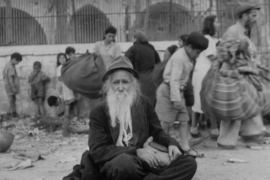By amalgamating data on the relationships between income levels, religio-cultural affiliation, heritage demographics, and voting patterns in Israel, it seems clear that the fundamental socio-political battle in Israel is one waged between a bloc of westernized high-income Ashkenazi (Jews who returned from exile in European countries) elites and a bloc of traditional proletarian Mizraḥi (Jews who returned home from exile from Arab countries) nationalists.
Of the eight parties representing primarily Jewish voters, four represent voters with average incomes below the national average Likud, Religious Zionism, Shas, and UTJ – the four factions comprising Israel’s current coalition. Yesh Atid, National Unity, and Labor represent voters who tend to earn above the national average while Yisrael Beiteinu represents voters who earn more or less at the national average.
Of these parties, four represent constituencies that identify in pluralities as traditional, Torah observant, or Ḥaredi; Likud, Religious Zionism, Shas, and UTJ, again, the four coalition parties. The plurality of Yesh Atid, National Unity, Yisrael Beitanu, and Labor voters all identify as “secular” (a label that already buys into basic tenets of Western civilization).
Of these parties, three represent constituencies that identify in pluralities as Mizraḥi; Likud, Religious Zionism, and Shas – all of the coalition. The rest, Yesh Atid, National , UTJ, Yisrael Beiteinu, and Labor, all have voter bases who identify in pluralities as Ashkenazi.
When you amalgamate this data, two clear blocs emerge. Bloc 1 – or “first Israel” as sociologist Dr. Avishai Ben-Ḥaim would term it – represent westernized Ashenazi Jews earning at or above average incomes: Yesh Atid, National Unity, Yisrael Beiteinu, and Labor – the Jewish parties of the opposition.
Bloc 2 – or “second Israel” – represents traditional or Torah observant Mizraḥi Jews earning below the average income: Likud, Religious Zionism, and Shas, parties of the coalition.
The obvious outlier would be UTJ, a coalition party that represents the Ḥaredi establishment and the major Ḥassidic courts in Israel. UTJ’s voters are majority Ashkeanzi, but also majority Ḥaredi and below-average income earners.
The almost-perfect correlation between class, tradition, levels of Torah observance, and heritage identity in Israel is no coincidence and should be the primary focus in understanding the fundamental fault lines in Israeli politics. All of the most contentious issues in Israel today explicitly challenge one of these identities and implicitly challenge all of them.
Take the issue of Shabbat.
At face value, this is an issue of Torah observance – the place of Shabbat in Israeli society today. But Shabbat is also a class issue, as its absence from the public sphere would force workers with less professional mobility to work on the one day their children are home from school.
If Shabbat is a class issue, then it is also a Mizraḥi issue, as Mizraḥim are disproportionately represented in the Israeli proletariat, thanks to a history of quiet oppression from the first Israel establishment.
Additionally, Mizraḥim are disproportionately traditional or Torah observant, as the Haskalah (Jewish Enlightenment), which led to a rapid breakdown of traditional Jewish identity in Europe, did not reach the Semitic region with the same strength. Taking these intersecting identities into account, eliminating Shabbat from public life in Israel would not simply be an attack on “religion” but an attack against the traditional working-class Mizraḥi population from the westernized upper-class Ashkenazi establishment.
The real fault lines in Israeli politics are therefore not the headline news items or even “pro-Bibi/anti-Bibi” but rather the tenuous boundary between these two camps. Israeli politics is an earthquake caused by the friction between these two Teutonic plates, first Israel and second Israel, the westernized Ashkenazi elites and the traditional Mizraḥi proletariat.





